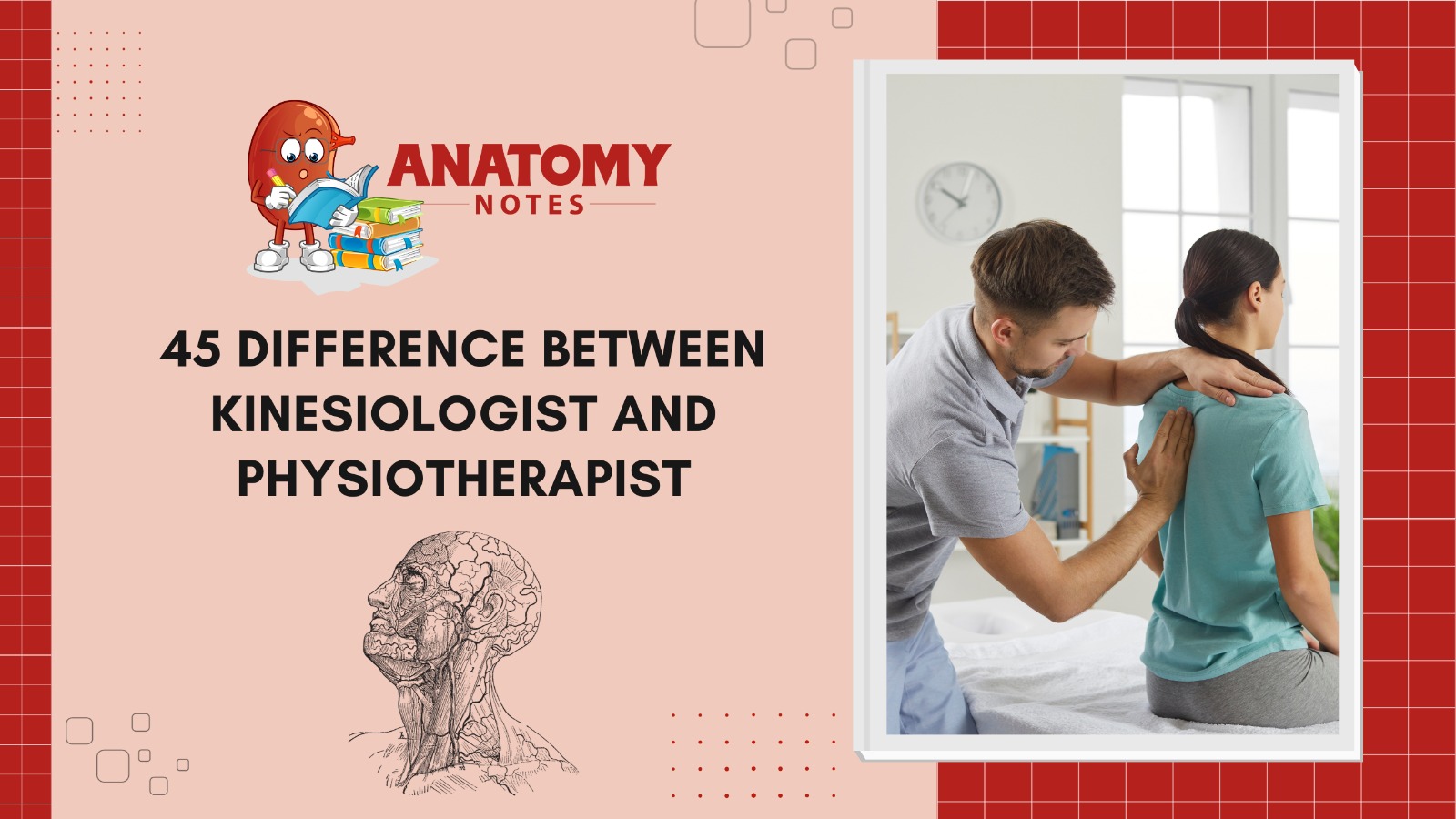Kinesiologists and physiotherapists increase physical health and mobility, although they have distinct tasks, training, scope of practice, and specialty. Some areas call them physical therapists, although physiotherapists are anatomy, physiology, and rehabilitation experts. The bulk are licensed physiotherapists with bachelor’s degrees. Manual therapy, exercise prescription, ultrasound, and electrical stimulation help people recover from injuries, surgeries, and illnesses.
Instead, kinesiologists study exercise and mobility. A bachelor’s degree in kinesiology and certification from the American College of Sports Medicine or the Canadian Society for Exercise Physiology are typical. Kinesiologists promote fitness, health, and injury prevention via biomechanical analysis and exercise prescription. Individualized training strategies assist all fitness levels, including athletes, in reaching their goals. Fitness centers, sports performance facilities, and personal trainers employ kinesiologists.
Another difference between kinesiologists and physiotherapists is patient care. Physiotherapists diagnose and treat many medical conditions and injuries, sometimes with doctors’ supervision. However, kinesiologists exclusively treat movement-based disorders. Personal training improves physical function and performance.
Kinesiologists and physiotherapists increase mobility and physical health, although they have different roles. Licensed physiotherapists use rehabilitation to identify and treat various medical conditions. Kinesiologists focus on exercise science and develop programs to increase fitness, health, and injury prevention. Anyone seeking individualized health and wellness services must understand these differences.
Also Read: An Introduction to Cells: Discovery, Cell Theory, and Parts
Here are 45 differences between kinesiologists and physiotherapists in a table format:
|
S.No. |
Aspects |
Kinesiologist |
Physiotherapist |
|
1 |
Profession |
Focuses on human movement and exercise science |
Focuses on physical therapy and rehabilitation |
|
2 |
Education |
Requires a bachelor’s degree in kinesiology or related field |
Requires a master’s or doctoral degree in physical therapy |
|
3 |
Clinical Training |
Typically does not involve clinical rotations |
Involves extensive clinical training and internships |
|
4 |
Licensure |
Licensing requirements vary by region and may not be mandatory |
Requires licensing in most regions to practice |
|
5 |
Scope of Practice |
Specializes in fitness, exercise prescription, and movement analysis |
Specializes in injury assessment, rehabilitation, and pain management |
|
6 |
Clinical Setting |
Works in fitness centers, sports training facilities, and wellness programs |
Works in hospitals, clinics, rehabilitation centers, and home care |
|
7 |
Patient Population |
Typically works with individuals seeking fitness and improved movement |
Works with patients of all ages with injuries, disabilities, or musculoskeletal conditions |
|
8 |
Injury Rehabilitation |
Less focused on injury rehabilitation |
Specializes in injury assessment and rehabilitation |
|
9 |
Treatment Plan |
Develops exercise programs and fitness plans |
Creates comprehensive treatment plans for patients |
|
10 |
Pain Management |
May assist with pain management through exercise |
Specializes in pain management through physical therapies |
|
11 |
Exercise Prescription |
Prescribes exercise for general health and fitness |
Prescribes specific therapeutic exercises for rehabilitation |
|
12 |
Injury Prevention |
Focuses on preventive measures in fitness and sports |
Emphasizes injury prevention and recovery strategies |
|
13 |
Sports Performance Enhancement |
Provides guidance for enhancing sports performance |
May help athletes recover from injuries and improve performance |
|
14 |
Muscle Testing |
May conduct muscle strength and flexibility assessments |
Conducts detailed musculoskeletal assessments |
|
15 |
Gait Analysis |
Less likely to perform gait analysis |
Often performs gait analysis and correction |
|
16 |
Rehabilitation Equipment |
Uses fitness equipment and exercise tools |
Utilizes a wide range of rehabilitation equipment |
|
17 |
Orthopedic Knowledge |
May have basic knowledge of orthopedics |
Has advanced knowledge of musculoskeletal conditions |
|
18 |
Goal Setting |
Focuses on fitness and lifestyle goals |
Sets specific rehabilitation goals for patients |
|
19 |
Therapeutic Modalities |
Typically does not employ therapeutic modalities |
Uses modalities like ultrasound, TENS, and heat therapy |
|
20 |
Manual Therapy |
Less likely to provide manual therapy |
Provides hands-on manual therapy techniques |
|
21 |
Treatment Duration |
Sessions may be shorter and focused on fitness |
Treatment sessions may be longer and more comprehensive |
|
22 |
Rehabilitation Plans |
Less emphasis on long-term rehabilitation plans |
Develops long-term rehabilitation plans for patients |
|
23 |
Neurological Conditions |
Typically does not work extensively with neurological conditions |
Works with patients having neurological conditions |
|
24 |
Certification |
Can obtain certifications in areas like personal training |
Certifications are specific to physiotherapy practice |
|
25 |
Pediatric Care |
May provide exercise programs for children |
Works with pediatric patients with various conditions |
|
26 |
Geriatric Care |
Less common in geriatric care |
Commonly provides care for elderly patients |
|
27 |
Cardiac Rehabilitation |
May assist in cardiac rehabilitation programs |
Specializes in cardiac rehabilitation programs |
|
28 |
Respiratory Rehabilitation |
Less common in respiratory rehabilitation |
Provides respiratory rehabilitation for conditions |
|
29 |
Post-Surgery Rehabilitation |
May provide exercise guidance post-surgery |
Specializes in post-surgery rehabilitation |
|
30 |
Injury Diagnosis |
Typically does not diagnose injuries |
Conducts injury assessment and diagnosis |
|
31 |
Treatment Progress Monitoring |
May focus less on detailed progress monitoring |
Monitors and adjusts treatment plans as needed |
|
32 |
Joint Mobilization |
Less likely to perform joint mobilization |
Often includes joint mobilization in treatment |
|
33 |
Evidence-Based Practice |
May follow evidence-based fitness guidelines |
Follows evidence-based practices in physiotherapy |
|
34 |
Referral Process |
May refer clients to physiotherapists for specific rehabilitation needs |
Typically does not refer clients to kinesiologists |
|
35 |
Custom Orthotics |
Does not typically prescribe custom orthotics |
May assess and prescribe custom orthotics |
|
36 |
Rehabilitation Focus |
Primarily focused on fitness and exercise |
Primarily focused on rehabilitation and recovery |
|
37 |
Musculoskeletal Assessments |
May conduct basic musculoskeletal assessments |
Conducts comprehensive musculoskeletal assessments |
|
38 |
Collaborative Care |
Less likely to collaborate with other healthcare professionals |
Collaborates with physicians, occupational therapists, and more |
|
39 |
Specialization Areas |
May specialize in areas like sports conditioning or exercise physiology |
Specializes in areas like orthopedics, neurology, pediatrics, and more |
|
40 |
Pain Assessment Tools |
May use pain scales for assessing discomfort |
Uses clinical assessments and standardized pain scales |
|
41 |
Interdisciplinary Care |
Typically not a part of interdisciplinary care teams |
Integral part of interdisciplinary care teams |
|
42 |
Insurance Coverage |
May or may not be covered by health insurance |
Generally covered by health insurance plans |
|
43 |
Aging Population |
Less commonly works with aging populations |
Commonly provides care for aging populations |
|
44 |
Modalities Used in Treatment |
Focuses on exercise modalities and fitness equipment |
Uses various modalities like ultrasound, electrical stimulation, and more |
|
45 |
Treatment Plan Adjustments |
May adjust exercise plans based on individual goals |
Regularly adjusts treatment plans based on patient progress |
Also Read: 36 Difference between Osteoporosis and Osteoarthritis
Frequently Asked Questions (FAQs)
Q.1 What differentiates kinesiologists from physiotherapists?
Kinesiologists and physiotherapists differ mostly in their areas of practice and competence. Licensed physiotherapists diagnose and treat a variety of medical problems and injuries utilizing rehabilitation techniques and collaborate with other healthcare experts. However, kinesiologists specialize in exercise science and create exercise regimens to promote fitness, avoid injuries, and improve physical health.
Q.2 Can kinesiologists and physiotherapists help athletes?
Kinesiologists and physiotherapists can help athletes. They may approach it differently. Physiotherapists may treat a wide range of medical conditions, including sports injuries, and provide thorough rehabilitation. Kinesiologists help athletes enhance their performance, devise sport-specific training programs, and avoid injuries via exercise and conditioning.
Q.3 Do kinesiologists and physiotherapists have similar educational backgrounds?
Kinesiologists and physiotherapists usually study health. With a bachelor’s degree or above, physiotherapists undergo intensive clinical training. A bachelor’s degree in kinesiology or a similar subject is usual, and some have certifications from the American College of Sports Medicine or the Canadian Society for Exercise Physiology.
Q.4 Can kinesiologists detect and cure illness?
Kinesiologists cannot diagnose or cure illness. Their specialty is exercise science and biomechanics, and they prescribe exercise to improve fitness, avoid injuries, and improve well-being. Healthcare professionals like physiotherapists and doctors should diagnose and treat patients.
Q.5 Where can I find kinesiologists and physiotherapists for consultation or treatment?
Physiotherapists and kinesiologists work in numerous healthcare settings. Physiotherapists work in hospitals, clinics, and rehabilitation centers, whereas kinesiologists work in fitness centers, sports performance facilities, and personal trainers. Whether you need a physiotherapist to recover from an injury or a kinesiologist to improve fitness and performance, pick a skilled and licensed specialist. To guarantee proper care, check the practitioner’s credentials.




